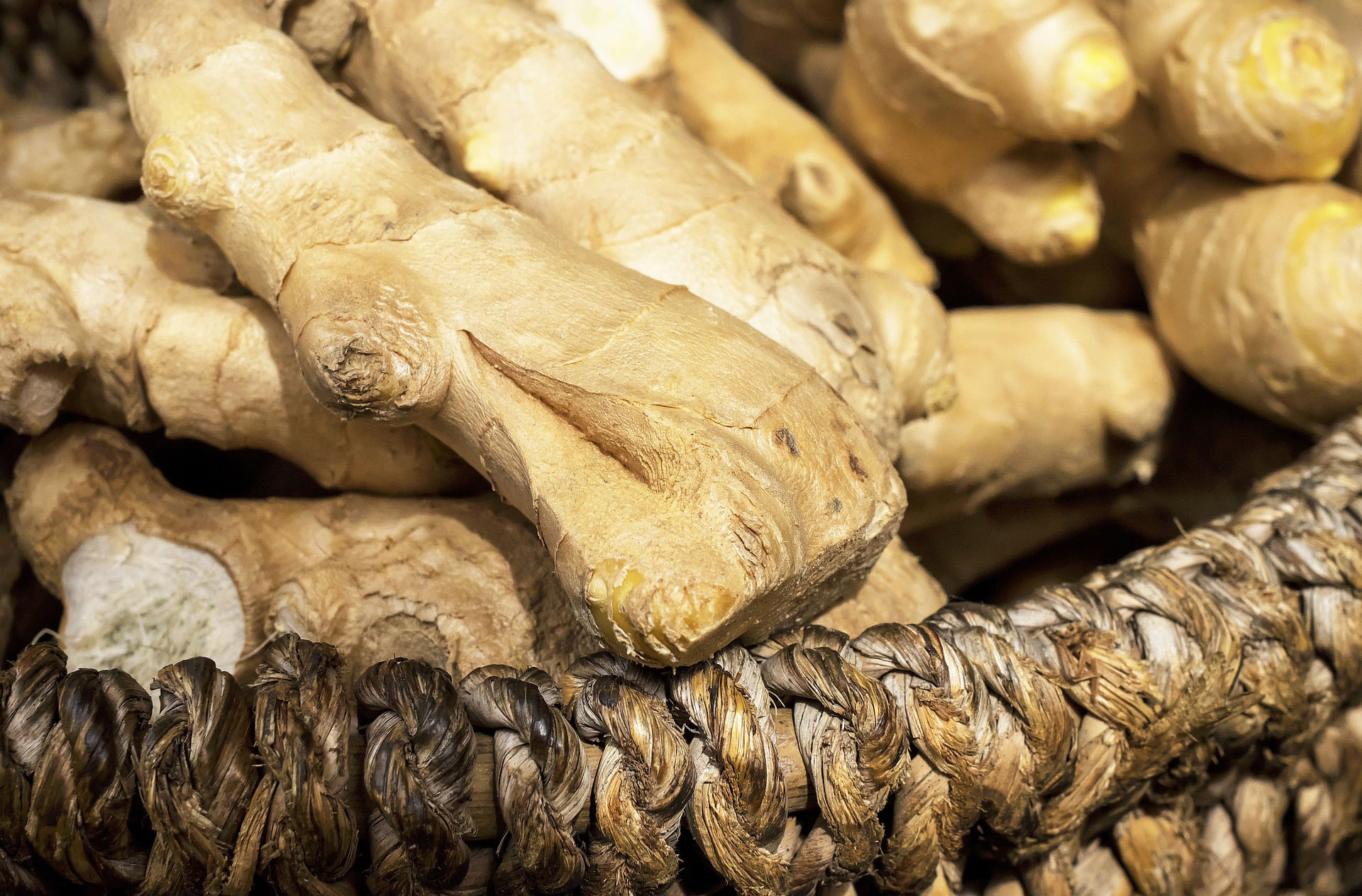Fresh Ginger Distribution Business

Ginger is a versatile and widely used spice that is popular for its many health benefits and unique flavor. The demand for fresh ginger has been steadily increasing as more people become aware of its culinary and medicinal uses. The ginger distribution business can be profitable if planned and executed correctly.
In this article, we will explore the key elements of a successful fresh ginger distribution business, including market research and analysis, logistics and transportation, quality control, and customer satisfaction. We will also discuss how to overcome challenges and risks in the ginger distribution business and how to scale up the distribution network for greater success.
Introduction to the Fresh Ginger Distribution Business
Ginger is a widely used spice and has been an integral part of cuisine and traditional medicine for centuries. It has numerous health benefits and is used in treating various ailments. The demand for fresh ginger has been steadily increasing in recent times, and entrepreneurs are looking to tap into this lucrative market.
In this article, we will discuss the entrepreneurial journey of a successful fresh ginger distribution business. We will delve into the market demand for fresh ginger, analyze the competition and target customers, develop an effective distribution strategy, and identify the right suppliers and partners for the business.

Overview of Ginger and its Demand in the Market
Ginger is a rhizome plant that originated in South-East Asia and is cultivated in tropical regions around the world. It is consumed in various forms, including fresh, dried, and powdered. Ginger has anti-inflammatory and antioxidant properties, aids in digestion, and is used in treating nausea, colds, and flu.
The global ginger market size was valued at USD 5.5 billion in 2020 and is expected to grow at a CAGR of 5% from 2021-2028. The demand for fresh ginger is driven by the rising awareness of its health benefits and its use in cooking and beverages.
Understanding the Entrepreneurial Journey in the Ginger Distribution Business
Starting a fresh ginger distribution business requires careful planning, market research, and a robust distribution strategy. Entrepreneurs need to identify the target market, assess the competition, and develop a unique value proposition.
The entrepreneurial journey involves identifying the right suppliers, developing partnerships with key stakeholders, and building a strong distribution network. The success of the business largely depends on the quality of ginger, effective marketing, and efficient distribution channels.

Analyzing the Market Demand for Fresh Ginger
Market Research and Analysis of Ginger Demand
Market research is critical in identifying the target market and understanding the demand for fresh ginger. It involves collecting data on consumer preferences, market trends, and competitor analysis. The data gathered helps in developing a unique value proposition that differentiates the business from competitors.
Assessing the Competition and Identifying Target Customers
In the ginger distribution business, competition can come from local suppliers, online platforms, and international markets. Understanding the competition and identifying the target customers are crucial in developing a unique value proposition.
Target customers can include retailers, restaurants, and individual consumers. Identifying the needs of the target customers and offering quality products at competitive prices can help in acquiring a loyal customer base.

Developing an Effective Distribution Strategy for Fresh Ginger
Creating a Business Plan for Ginger Distribution
Developing a business plan helps in outlining the objectives, identifying the target market, assessing the competition, and developing a unique value proposition. It also helps in estimating the financial requirements and developing a sustainable growth plan.
Designing the Sales and Marketing Strategy for Ginger Distribution
Effective sales and marketing strategies can help in promoting the business and acquiring a loyal customer base. The sales and marketing strategy can include online and offline advertising, social media marketing, and promotional events.
The distribution strategy involves identifying the right channels for distributing the products, managing logistics, and developing a strong distribution network.

Identifying the Right Suppliers and Partners for the Business
Selecting the Best Quality Ginger Suppliers
Selecting the right suppliers is crucial in ensuring the quality of the products. The suppliers' reliability, quality of products, and pricing are critical factors to consider. Regular inspections and quality control measures can help in maintaining the quality of the products.
Building Relationships with Key Partners and Stakeholders
Building partnerships with key stakeholders can help in developing a strong distribution network and expanding the business. Partnerships can include logistics providers, retailers, and food service providers. Establishing strong relationships based on trust and mutual benefits can help in sustaining the partnerships.

Implementing Efficient Logistics and Transportation Systems
Transporting fresh ginger from farms to consumers requires well-planned logistics and transportation systems. Efficient transportation channels can minimize travel time, reduce costs, and prevent damage to the ginger during transit. To establish transportation channels for ginger distribution, a business can opt for outsourcing logistics services or creating an in-house transportation team. Additionally, choosing the right mode of transportation, such as refrigerated trucks, can prevent spoilage and ensure the ginger remains fresh upon arrival.
Setting up storage and warehousing facilities is also crucial to maintain the quality of the ginger. Adequate storage solutions can prevent damage from temperature fluctuations, humidity, or pests. The storage facility should also have suitable ventilation systems to help the ginger stay dry and fresh. By implementing these logistics and transportation solutions, the efficiency of the ginger distribution business can be improved.

Maintaining Quality Control and Ensuring Customer Satisfaction
Maintaining the quality of fresh ginger is crucial for a successful distribution business. Establishing quality control standards for ginger distribution ensures that the ginger is fresh, healthy, and of high quality. Implementing quality control procedures such as regular checks and inspections can help identify any problems and prevent contamination.
Furthermore, a business should implement customer service and support systems to ensure customer satisfaction. This can include customer feedback mechanisms, return policies, and prompt responses to queries. By listening to customer feedback, a business can identify areas where improvements can be made in the quality of their product and services.

Overcoming Challenges and Risks in the Ginger Distribution Business
The ginger distribution business has its challenges and risks, including transportation risks, price fluctuations, changing regulations, and competition. Identifying these risks and developing strategies to overcome them is essential for business success. For instance, a business can reduce transportation risks by investing in good quality vehicles or opting for insurance that can protect against loss or damages during transportation.
A business should also stay informed about market trends and changes in regulations that can affect its operations. Developing contingency plans to overcome unforeseen challenges can help minimize risks and ensure business continuity.

Scaling Up and Expanding the Distribution Network for Greater Success
Expanding the distribution network is critical for achieving greater success in the ginger distribution business. This can involve exploring opportunities for growth and expansion, such as targeting new geographical areas or tapping into new markets. By conducting research on potential customers or partners, a business can determine how to scale up its operations efficiently.
Developing plans for scaling up the business can also help in optimizing its operational efficiency. This can involve investing in new technologies or upgrading existing systems, expanding the workforce, or outsourcing some of the non-core operations. With these strategies in place, a business can expand its ginger distribution operations and achieve greater success.
In conclusion, the fresh ginger distribution business requires careful planning, execution, and continuous improvement to achieve success in a highly competitive market. By implementing an effective distribution strategy, identifying the right suppliers and partners, ensuring quality control, and maintaining customer satisfaction, entrepreneurs can establish a profitable and sustainable ginger distribution business. With the right mindset, dedication, and willingness to learn and adapt, the ginger distribution business can be a rewarding venture that contributes to the health and well-being of people around the world.

FAQs
What are the benefits of fresh ginger?
Fresh ginger has many health benefits, including anti-inflammatory and antioxidant properties, relief from nausea and vomiting, and improved digestion and metabolism.
How can I identify the right suppliers for fresh ginger?
When identifying suppliers for fresh ginger, factors to consider include product quality, availability, price, reliability, and reputation. Conducting research and building relationships with potential suppliers can help in making the right choice.
What are the common risks and challenges in the ginger distribution business?
Common risks and challenges in the ginger distribution business include fluctuating market demand, weather and climate conditions affecting ginger production, transportation and logistics issues, and competition from other suppliers.
How can I scale up and expand my ginger distribution network?
Scaling up and expanding your ginger distribution network can involve exploring new markets, developing new products, building stronger relationships with suppliers and partners, investing in technology and automation, and continuous improvement in logistics and transportation.
